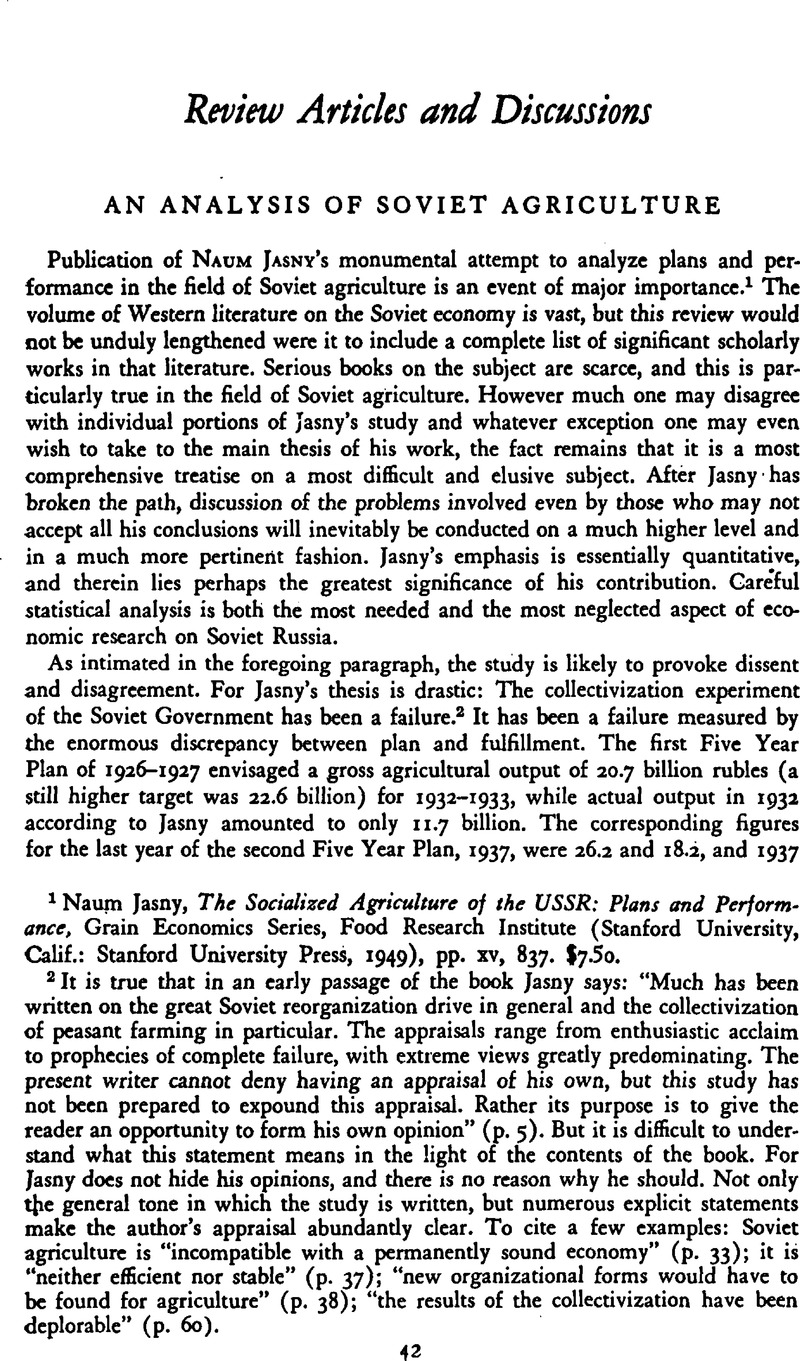Article contents
An Analysis of Soviet Agriculture
Published online by Cambridge University Press: 03 February 2011
Abstract

- Type
- Review Articles and Discussions
- Information
- Copyright
- Copyright © The Economic History Association 1951
References
1 Jasny, Naun, The Socialized Agriculture of the USSR: Plans and Performance, Grain Economics Series, Food Research Institute (Stanford University, Calif.: Stanford University Press, 1949), pp. xv, 837. $7.50Google Scholar.
2 It is true that in an early passage of the book Jasny says: “Much has been written on the great Soviet reorganization drive in general and the collectivization of peasant farming in particular. The appraisals range from enthusiastic acclaim to prophecies of complete failure, with extreme views greatly predominating. The present writer cannot deny having an appraisal of his own, but this study has not been prepared to expound this appraisal. Rather its purpose is to give the reader an opportunity to form his own opinion” (p. 5). But it is difficult to understand what this statement means in the light of the contents of the book. For Jasny does not hide his opinions, and there is no reason why he should. Not only the general tone in which the study is written, but numerous explicit statements make the author's appraisal abundantly clear. To cite a few examples: Soviet agriculture is “incompatible with a permanently sound economy” (p. 33); it is “neither efficient nor stable” (p. 37); “new organizational forms would have to be found for agriculture” (p. 38); “the results of the collectivization have been deplorable” (p. 60).
3 Jasny, N., “Soviet Statistics,” Review of Economics and Statistics, XXXII (1950), 92–99CrossRefGoogle Scholar.
4 Cf. Stalin, I., “Otnositel'no Marksisma v yazykoznanii [On Marxism in Philology],” Bol' shevik, XXVII, No. 12 (June 1950), 12Google Scholar.
5 Since the time of writing (spring 1950), it has become clear that the Soviet government has launched an ambitious campaign of kolkhoz consolidations, designed to enlarge substantially the size of the individual collective farm. This is a move in the opposite direction. It would be difficult to argue, however, that Marxian ideas have played an important role in initiating the new development. It seems that essentially the need for accelerated transfer of man power into industry in conjunction with a desire to tighten even further the government's control over, and its supervision of, collective farms must be held accountable for the new policy. As usual, the motivations are pragmatic rather than ideological.
- 1
- Cited by




